
History of Video Games: Struggle for Second Best (2003-2004) - Article
by Taneli Palola , posted on 12 May 2016 / 12,253 ViewsWith the recent launch of both Microsoft's Xbox and Nintendo's GameCube, 2003 was set to be the year when the console war would truly heat up once more. The two newcomers had now established themselves in the market with numerous excellent games and were setting their sights on breaking the dominance of Sony's PlayStation 2.
However, it would soon become apparent that dethroning the reigning king would not be at all easy. After very successful launches both consoles encountered some notable setbacks in 2003. The Xbox, despite a strong marketing campaign, was struggling hard in Japan. By the end of 2002 the console had sold only around 300,000 units since launching in February of that year. It was even outsold by the PSone and the WonderSwan at times.
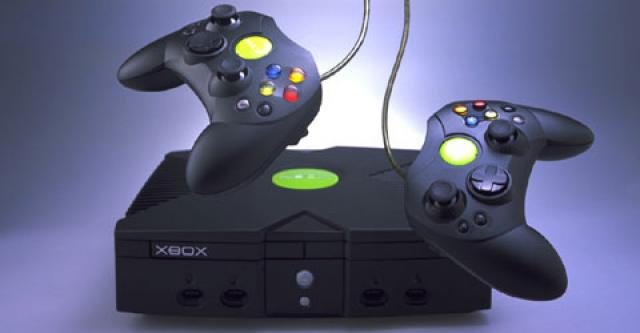
This trend would continue in subsequent years as well. For example, in 2004 during the week ending July 18, the Xbox sold just 272 units in Japan; 4 fewer than the PSone that same week. Europe was another region where the console struggled, falling far behind the PS2. It ultimately only sold a little over 7 million units in the region against the 55 million of the PS2. Fortunately for Microsoft North America would prove much more receptive to the newest console manufacturer.
The GameCube also faced its own difficulties in 2003. Sales of the console were starting to lag far behind Nintendo's expectations, to the point that for the first nine months of the year Nintendo actually halted production of the GameCube in order to get rid of all the surplus units left over from the previous year. The console finally saw a small resurgence with a price cut in September, after which sales remained fairly steady but nonetheless still some way behind its two competitors.
Sony's PS2 on the other hand faced very few problems in 2003. Even during a year when Sony expected sales to drop compared to the previous year, the console still moved nearly 20 million units within the 12 month period. But sales notwithstanding, 2003 gave all three consoles some of their most beloved games. The PC and GBA got their own great games as well.
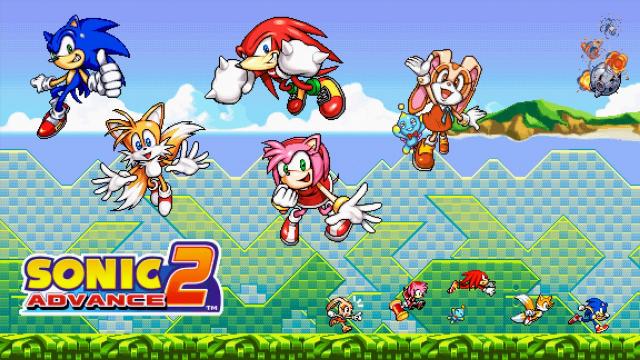
The Game Boy Advance saw titles like Sonic Advance 2, Castlevania: Aria of Sorrow, Harvest Moon: Friends of Mineral Town, and Fire Emblem (which was the first game in the series released outside of Japan; the popularity of the two Fire Emblem characters in Super Smash Bros. Melee - Marth and Roy - having encouraged Nintendo to begin localizing the series).
In addition, the handheld also played host to Final Fantasy Tactics, Mario & Luigi: Superstar Saga, and the best selling game in the platform's history, Pokèmon Ruby and Sapphire. All of these games combined to make 2003 one of the GBA's best years.
PC gamers received SimCity 4, which is still widely regarded as the series' last truly great entry, and Tom Clancy's Rainbow Six 3: Raven Shield. Although the latter was well received at the time, it began moving the series towards the more mainstream style of shooters, stripping down the series' tactical depth and ultimately proving a divisive entry amongst series fans. Command & Conquer: Generals also stood out, introducing a new storyline to the series that was separate from the Tiberium and Red Alert stories.
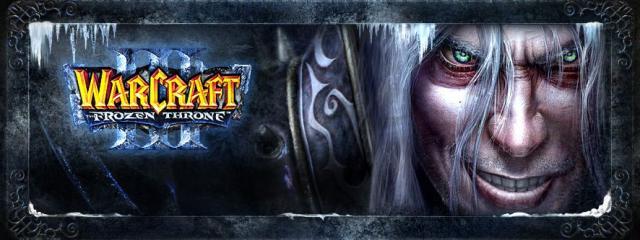
In May Planetside became one of the first MMOFPS titles to ever release. It allowed up to 399 players to fight on the same map simultaneously. But the middle of the year was really dominated by the launch of WarCraft III: Frozen Throne - the expansion to Blizzard's hugely popular RTS game - and Star Wars Galaxies, which was the first MMORPG to be set in the Star Wars universe.
The latter half of the year also had its fair share of great games, including the likes of Homeworld 2 and Star Wars Jedi Knight: Jedi Academy. PC was also the first platform to receive Max Payne 2: Fall of Max Payne in October, with the PS2 and Xbox versions following in November and December, respectively. Finally, 2003 saw the debut entry in what would go on to be one of the biggest video game series of all time when Call of Duty was released in October in North America and in November in Europe.
Despite its struggles the Xbox had an excellent year for releases, although it lacked slightly in the exclusives departments. January saw the launch of one of the console's forgotten gems - Panzer Dragoon Orta - which is still the last game to be released in the series. Another one of the console's cult classics was Crimson Skies: High Road to Revenge. Both games were very well received, but unfortunately they weren't very successful commercially.
Other acclaimed titles included the likes of Amped 2, Top Spin, and numerous multiplatform titles such as Grand Theft Auto: Vice City and Tony Hawk's Underground. The most notable new release on the console in 2003 was most likely Star Wars: Knights of the Old Republic, which was released on the Xbox several months before it came to PC. This title is often considered one of the best Star Wars games ever made.
The GameCube on the other hand had no shortage of exclusives but notable multiplatform titles were elusive. Games like Ikaruga, Wario World, Viewtiful Joe and F-Zero GX were all very good games, but none of them were really system sellers. Fortunately, Nintendo had some bigger games to offer.
Mario Kart: Double Dash and Mario Party 5 were among Nintendo's biggest games in 2003. Double Dash would eventually become the 2nd best selling game on the system and the Mario Party series hadn't yet reached oversaturation in people's eyes. In addition Nintendo released Pokémon Colosseum in Japan (a western release would come the following year). But by far the most hyped release of the year on the system was The Legend of Zelda: Wind Waker.
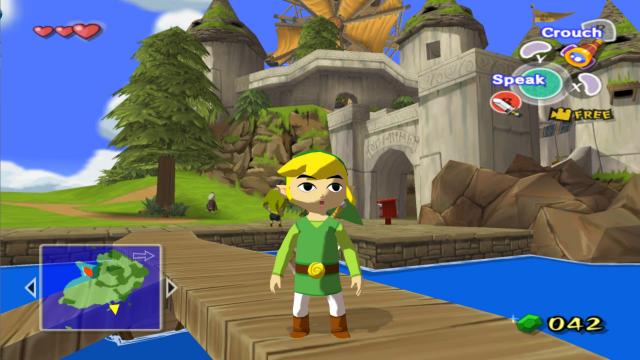
Wind Waker was one of the more controversial entries in the series because of its cel-shaded art style. It was heavily criticised by fans during development, but as with most Zelda titles it garnered wide critical acclaim upon release. It has, of course, since become one of the series' most beloved entries and would eventually go on to be the platform's 4th best-selling game.
Out of the few notable multiplatform games to release on the system was Soul Calibur II, which is also interesting for another key reason. While the game was also released on the two other major consoles of the era, the GameCube release is often seen as the best because it featured Link as a guest character (the Xbox had Spawn and the PS2 had Heihachi from Tekken).
However, no matter what games the other two consoles were pumping out, the PlayStation 2 remained the most popular system by far. It was now experiencing a similar trend that the PS1 had benefitted from in the previous generation. The console had the most owners, and was attracting more and more developers, and this in turn attracted more owners in what became a virtuous circle. The console's popularity basically fed itself, which is why it was so difficult for Nintendo and Microsoft to even begin to compete against Sony at this stage.
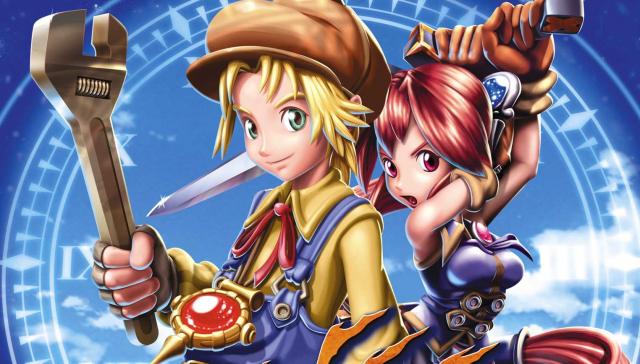
Early in the year the PS2 received numerous well received smaller profile titles like Dark Chronicle (Dark Cloud 2 in the US), Xenosaga Episode I: Der Wille Zur Macht, Amplitude, and Zone of the Ender: The 2nd Runner. There were also a few higher profile releases in amongst these that weren't so well received (The Getaway and Devil May Cry 2, for example).
As the year went on the pace of new releases also began to pick up for the PS2. Survival horror was especially well represented in 2003, first by Siren (Forbidden Siren in Europe), then Silent Hill III, and finally Fatal Frame 2: Crimson Butterfly. Platforming titles also continued to do well, with both Jak II and Ratchet & Clank: Going Commando releasing within a month of each other to excellent reviews and high sales.
Multiplatform titles often came first to Sony's console thanks to its immense popularity. One notable example is Ubisoft's Prince of Persia: The Sands of Time, which revitalised the dormant series with one of the best games of the year. It ultimately went on to sell nearly 4 million copies. Beyond Good & Evil, one of the 6th generation's most beloved cult classics, is another example.

Beyond Good & Evil was very well received by critics, but ended up being a commercial failure. There were many reasons for this, but the poor timing of its release and lack of marketing certainly played their parts. It was actually released the same month as The Sands of Time and Ubisoft focused most of its efforts on the latter. The crowded holiday market also didn't help matters.
Some notable events also took place in 2003. On April 1, Square Enix was formed as a result of the merger between Enix and Square, while in June former Black Isle Studios members founded Obsidian Entertainment. Additionally, in May the 3DO Company announced its bankruptcy.
Finally, 2003 also saw the release of two notable new handheld consoles. Nintendo released the Game Boy Advance SP, which was an upgraded version of the GBA. The SP was a huge success, going on to sell over 40 million units by the end of its lifetime. The other handheld was Nokia's attempt at getting into the video game market - the N-Cage. The N-Cage failed to live up to expectations, selling just 3 million units lifetime and effectively halting any plans Nokia had for the video game market.
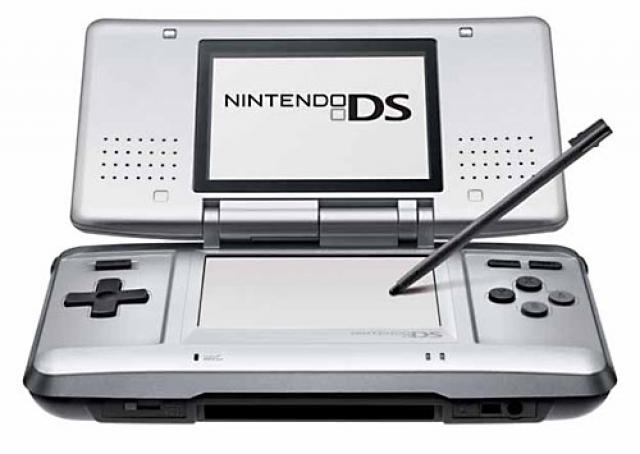
2004 was a much bigger year for hardware. First the Nintendo DS was released in November in North America and the following month in Japan. A European release would follow in 2005. The launch was a huge success as the DS sold over 500,000 units first week in US alone and by the end of the year the console had shipped over 2.8 million units worldwide.
However, for the first time since Sega's heyday, Nintendo was about to face a serious challenge for its dominance over the handheld market. Sony had decided to throw its hat into the ring and create its own handheld, the PlayStation Portable. However, the system only launched in Japan in 2004 and the western release had to wait until 2005.
The console's Japanese launch at least was a success - the PSP sold over 200,000 units in two days. This was the first indicator that at long last the handheld market wouldn't be controlled by just one company. Still, the real competition wouldn't start until the following year when both handhelds were made available to the rest of the world.
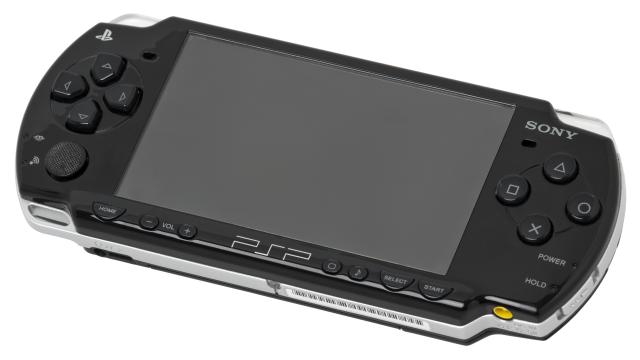
PC once again had an excellent year, with numerous long-awaited sequels and hyped original IPs releasing in 2004. FPS titles in particular were experiencing a renaissance. Battlefield: Vietnam, Unreal Tournament 2004, Painkiller, Counter Strike: Source, Far Cry, and Doom 3 were just some of the notable games within the genre that released in 2004. However, there was one FPS that overshadowed all of them.
That game was Half-Life 2, which was finally released in November of 2004 after five years of development. Immediately upon release the game became a huge success and is still often considered one of the greatest games of all time due to its groundbreaking design in both technology and gameplay.

Of course, that wasn't all there was on the platform. MMORPGs were also quickly becoming one of the most popular genres around. 2004 saw the launch of City of Heroes, a superhero MMO where players could create their own superhero, and Everquest II, a sequel to the popular MMORPG that released in 1999. But it was a certain other MMO that received the most attention from fans of the genre - World of Warcraft. World of Warcraft was released in November and quickly became the most popular game within the genre, peaking at over 12 million subscribers.
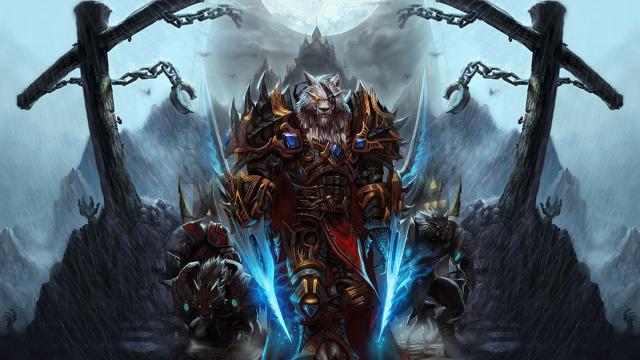
Other notable games released on PC in 2004 included Thief: Deadly Shadows, Star Wars: Battlefront, Rome: Total War, and Sims 2, all of which were well received upon release and helped make this a great year for PC gamers.
On the handheld side of things the GBA was still king, despite the newer consoles coming out in late 2004. Games like Metroid: Zero Mission, Mario vs. Donkey Kong, Pokemon FireRed and LeafGreen, Kirby and the Amazing Mirror, and Kingdom Hearts: Chain of Memories ensured that the focus was still firmly on the GBA.
By 2004 the home console race had been all but decided. The PS2 passed 70 million units sold in mid-January, leaving both the Xbox and GameCube to fight for a distant second place. Fortunately, each console still had more than enough great games to satisfy their owners, even if the scales were beginning to dip heavily in favour of the PS2 at this point.

2004 was one of the GameCube's best years as far as quality of games was concerned. While the number of releases was slowly declining, there was still no shortage of great games on the console. Nintendo alone was responsible for The Legend of Zelda: Four Swords Adventure, Pikmin 2, Paper Mario: The Thousand Year Door, and most notably Metroid Prime 2: Echoes.
In addition the GameCube had a quite good year for third party titles as well. Viewtiful Joe 2 was released first on the GameCube in November, while Metal Gear Solid: Twin Snakes brought the original Metal Gear Solid to the console in remastered form and to this day it remains the only console with this version of the game. The GameCube also had a very good year for JRPGs, with Final Fantasy: Chrystal Chronicles, Baten Kaitos: Eternal Wings and the Lost Ocean, and Tales of Symphonia all giving RPG fans something to play on the console.
The Xbox was in a similar position; it simply couldn't compete with the number of games coming out on the PS2, but that didn't stop the console from getting its own share of great games. For example, when Ninja Gaiden launched on Xbox it was the first new game in the series in over a decade, and it revitalized the classic series after an extended absence.
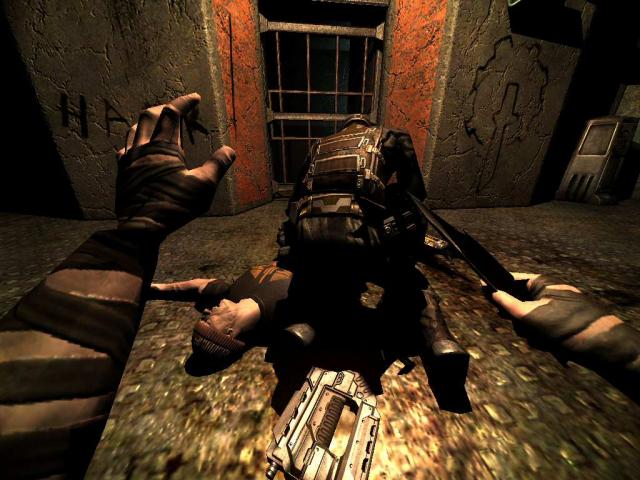
Another well received exclusive for the console was Chronicles of Riddick: Escape From Butcher Bay, which was one of the biggest surprises of the year. Most people didn't expect much given that it was a game based on a film franchise but it actually ended up being one of the highest rated games of 2004. Also, to this day it still features one of the best implementations of first person melee combat in a video game.
Two games in particular were released in 2004 that had a huge impact on the Xbox as a platform. The first was Fable - Peter Molyneux's very own pot of unfulfilled promises. The game was well received despite being criticised for not delivering on a lot of Molyneux's initial promises. Fable would go on to spawn numerous sequels and become one of the Xbox brand's most important franchises.
The second was by far the biggest game of the year on the console, as well as the best-selling game in general on the Xbox - Halo 2. The original Halo could be seen as the main reason the Xbox was able to establish itself as a serious contender on the console market. Without it, the Xbox brand may very well have died off with this first console.
Halo 2 built upon the success of the first title, introducing online multiplayer to the series and generally polishing the gameplay. It went on to sell 8.49 million copies, which made it an undeniable success for Microsoft. However, its sales distribution also exemplified the console's main issue. Nearly 7 million copies of the game were sold in the US alone, showing just how important that one region was to the success of the console and how much it was struggling to make an impact elsewhere.
Sony's PS2 once again went from strength to strength, especially near the end of the year when a slew of notable releases came out within a period of a few months. 2004 was also the year that Sony made the most significant revision to its flagship console when the PS2 slim was released in October. This would result in a significant boost to the platform's sales in the long term (sales had been slowly declining before and during 2004).
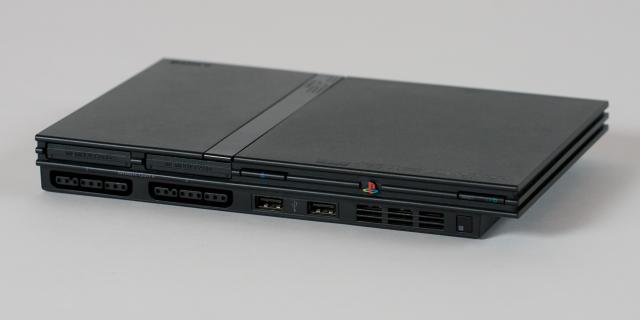
The first half of the year was filled with smaller, niche titles, with a few bigger releases thrown in from time to time. These included such games as Maximo vs. Army of Zin, Romance of the Three Kingdoms IX, Drakengard, La Pucelle: Tactics, Front Mission 4, and some notable multiplatform titles like Hitman: Contracts. In addition, Final Fantasy XI was released on the console in NA, giving the PS2's online capabilities a much needed marketing tool.
The latter half of the year also boasted some notable small profile releases. These included the likes of Katamari Damacy, Shadow Hearts: Covenant, and Shin Megami Tensei: Nocturne, among many others. Killzone debuted in 2004 too, although it was still far from being one of Sony's premier franchises at this point.
Naturally, though, it was the big name titles that acquired most of the attention. Starting from September all the way to the end of the year the PS2 saw the release of some of its most beloved games. In September the two biggest releases were Sly 2: Band of Thieves and Silent Hill 4: The Room. Sly 2 is often seen as the series' high point, while Silent Hill 4 on the other hand usually marks the point at which the series began its long slide towards mediocrity.
October was an absolutely massive month for the console, even if there was only one truly huge game releasing that month. But when that game is Grand Theft Auto: San Andreas then such a statement is certainly warranted. San Andreas to this day remains one of the best-selling games of all time, and the best-selling game on the PS2 by a wide margin. It sold 20.81 million units on the PS2 alone. All versions combined it is the second best-selling game in the series after only Grand Theft Auto V.
In November Ratchet & Clank: Up Your Arsenal and Jak 3 were released within a week of each other, before one of the most hyped video games of the year, Metal Gear Solid 3: Snake Eater, launched. Snake Eater took the series into an entirely new direction, abandoning the present day setting in favour of cold war-era Soviet Union. For many it was a return to form after the divisive Sons of Liberty and personally it is my favourite game in the entire series.
Finally, multiplatform games like Need For Speed: Underground 2, Burnout: Takedown, and Prince of Persia: Warrior Within generally sold the highest number of copies on the PS2. This wasn't really that surprising considering the fact that by the end of 2004 the PS2 had sold over 81 million units worldwide, nearly double the units sold by both the Xbox and GameCube lifetime.
The console war had become very one sided by the end of 2004, with the PS2 dominating its competition on the home console front and the GBA having a similarly strong hold over the handheld market. However, things would start to get interesting on both fronts very soon, with numerous new hardware releases waiting just around the corner.
That is a topic for next time, however, as we'll end this part of our look at the history of video games here. Next time, the start of a new generation and history once again repeating itself. As always, thanks for reading.
More Articles
Warcraft 3, WoW, C&C Generals, Homeworld 2, all those good times. Back when WoW was actually consistent with it's content. and C&C wasn't dead.
Awesome article. You win by mentioning Zone of the Enders.
The year 2004 was considering early next gen(7th gen), we had DS, PSP & some PC games were evolved game engines such as DOOM 3, Half-Life 2, Counter Strike Source, Painkiller Far Cry, & Riddick, man these graphics just blew my mind, THIS is the reason made me build another gaming PC rig with Athlon 64 & Nvidia Geforce 6800 Ultra just for those games!! Wow, this great article brings me back memory.
Fun fact. All of those games were also on the original Xbox.
The good ol' days of the King.PC also was really good at the time, I wish I had known PC gaming existed back then.As always great article.
The nostalgic feels, oh man. The PS2 was a beast and deserves any recognition it gets as the greatest game system ever, but given that I wasn't a huge GTA fan, I think I had more fun with the Gamecube in 03-04. Wind Waker and Soulcalibur II (GC) were my favorite games of 2003. Another little GC gem was Skies of Arcadia Legends (launched in the US Jan. 23rd), which was a port of a Dreamcast game I never got to play. In 2004, my favorite game, believe it or not, was Tales of Symphonia. That was my first Tales title and it was a little bit like playing my first Final Fantasy game. I also have the warm-and-fuzzies for Symphonia because it was a bright spot in a crappy year.
And by crappy, I mean life in general, not gaming. Gaming was one of the few things keeping me going then. :)
Off topic, but looking back at sales numbers really makes you realize just how balanced and even Seventh Gen was. 66/34-ish split in handheld, 40/30/30-ish in home consoles. Nintendo won the numbers game, but the generation arguably belonged to Xbox 360 (in spite of Final numbers showing PS3 had one by a nose).
PS2 was such a beast. To this day it is my favourite console.
Ihan jees.
Good read.
Gen 7 was simply amazing.
Insightful, thanks!
This was such a great time for gaming. Maybe my fav era.
It saddens me there were people who scoffed at Wind Waker's visuals when the game was pretty freaking great.
"Judge not a book by its cover"
It's a saying as old as dirt but still relevant today.
It was partly because it wasn't until you saw the game actually move that you realised just how amazing it was. In those days it was stagnant screenshots that previewed the game and it didn't do it justice.
Thankfully, Wind Waker has been somewhat vindicated by time and history. It's an amazing game and still looks gorgeous. I'd say it's better regarded today than Twilight Princess, which was the Zelda game that people that hated Wind Waker wanted. I actually like Twilight Princess a bit better, but Twilight Princess and Wind Waker, along with A Link to the Past on SNES, are my favorite Zelda games.
Second favorite console of all time: PS2. Right behind the SNES, of course ;)
The Xbox was an amazing and underrated console. It's probably the most innovative console in history.
Love the brand - and that's from someone who's been gaming since the 2600.
"By the end of 2002 the console had sold only around 300,000 units since launching in February of that year. "
The Xbox One would kill for those kind of numbers... moral of the story: always appreciate what you got because it could always be worse.








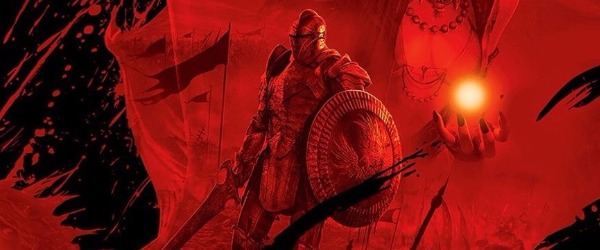
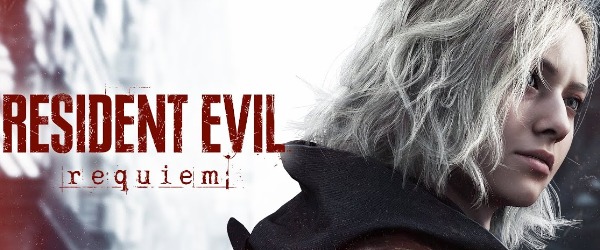
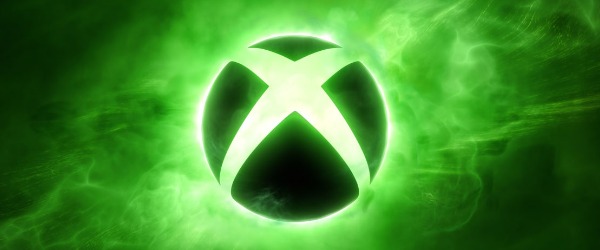
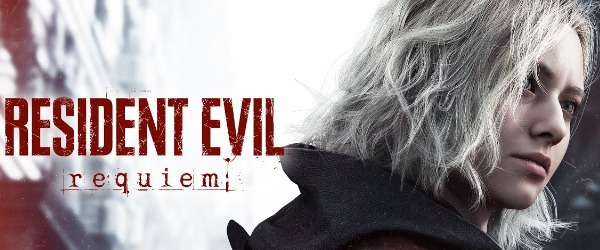










 Essay Pro
Essay Pro